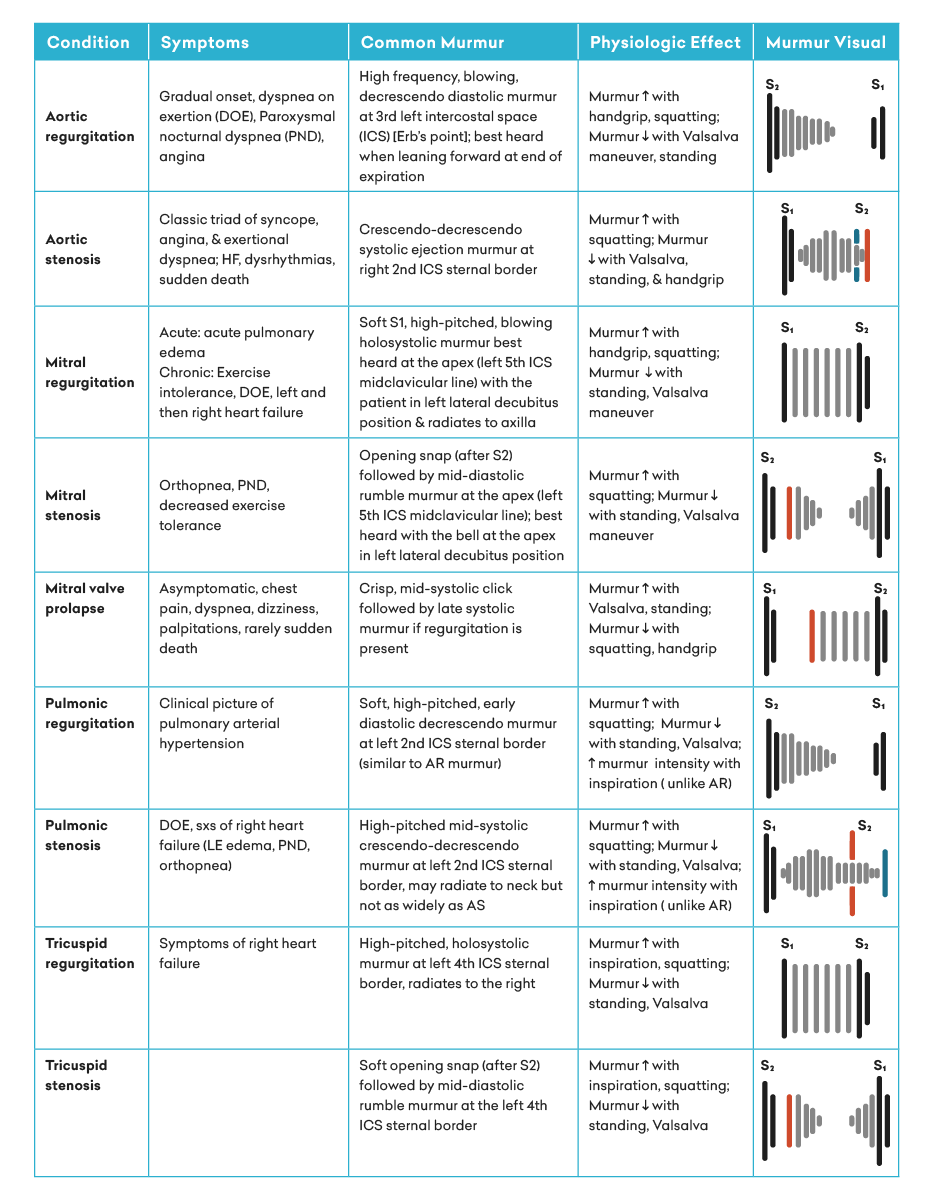Don’t Go Breaking My Heart…Valve

As we celebrate American Heart Month, let’s take some time to review all the different ways our heart valves can break and how they present in the clinical setting. Ok, “break” is dramatic, but it’s February, when all sorts of heart puns are forgiven, right? ❤️
Imagine having three almost identical siblings. The four of us are in charge of keeping somebody alive; the quadtastic valvular team of the aortic, the mitral, the pulmonic and the triscuspid. Two of us live on the right side of the body and the other two live on the left side, but we all have the same job. Open wide and close tight, open wide and close tight, on repeat, 24/7 with no breaks, forever until the end of days. I do my job. I rarely make any noise. I am no bother. I hardly ever get sick. My siblings on the left get sick a lot and they make so much noise; they are so loud you can hear them in other parts of our body. Even my closest sibling gets more attention because of what they open upon. But not me. I know I’m the most stable of my siblings, I know I am the one who breaks down the least, but that also makes me the loneliest. I’m also the last in alphabetical order; perhaps it’s just my lot in life to be overlooked and forgotten. It’s lonely to just do your job correctly all the time and get no attention. Welcome to the Lonely Heart Valve Club. Tricuspid valve, party of 1.
Tricuspid and pulmonic valvular disease are less common and less severe than the disease caused by their left-sided siblings, the aortic and mitral valves. According to the CDC, aortic and mitral disease combine for 76% of deaths due to valvular disease. However, not all of Tricupid’s complaints above were entirely accurate. Trace tricuspid regurgitation (TR) is, in fact, common but typically benign, causing no signs or symptoms. Approximately 80% of healthy adults have trace TR seen on echocardiography.
 Here’s to years and years of these four almost-identical-valvular siblings continuing their endless work in all the bodies we know and care for. But when they get sick, start to make noise, and cause problems, it is vital to determine which valve is the issue so we can provide proper treatment.
Here’s to years and years of these four almost-identical-valvular siblings continuing their endless work in all the bodies we know and care for. But when they get sick, start to make noise, and cause problems, it is vital to determine which valve is the issue so we can provide proper treatment.
Got it in your heart for one more Valentine’s Day reference?… Why did the heart take up knitting? To mend its broken valves. 💔🤣
Practice-Changing Education
Experience education that goes beyond theory. Explore Hippo Education’s offerings below.

